Enjoy homemade orange marmalade anytime with this quick and easy recipe. Small-batch, no pectin needed, no canning and ready in 1 hour!
It’s citrus season and if you find yourself with a big bowl of wonderful oranges, maybe left-over from the holidays, there is no better use for them than to turn them into some marmalade!
There is something incredibly satisfying about making a lovely jar of marmalade. I think it’s even better when you can do it all with just 3 ingredients (oranges, lemon and sugar) and in less than an hour!
Ingredient Notes
Oranges – While you can technically make orange marmalade from any orange, I recommend mandarin oranges. They are thin-skinned, with little bitter pith (the white stuff) and wonderfully flavourful. As they are also a little sweeter, your marmalade will be a little on the sweeter side, which is great if you don’t like a really sour marmalade. Since there are a wide variety of mandarin orange, if you don’t have a scale, as a general guide, you will need about 2 Satsumas or Halos. You will need 3 clementines (or maybe 4 if they are especially small). Again, aim for 300g of orange to start your marmalade.
If using navel oranges, you will need to be very careful to remove just the outermost orange peel for slicing, then remove and discard the pith layer, before chopping the fruit, to avoid a bitter marmalade. A vegetable peeler or really sharp paring knife works well for this. You will probably need just one navel orange if they are a good size.
If you like a more bitter marmalade and you can find some Seville Oranges, they are fine, too. Just increase the amount of added sugar to equal the weight of your oranges, so your marmalade isn’t too bitter.
Sugar – Regular white granulated sugar is all you need here. Don’t be tempted to reduce the amount of sugar here, or your marmalade may not set. A certain amount of sugar is needed for this process and just remember, it’s a condiment, so you won’t be eating the whole jar in one sitting :) In this case, I am using a 3:2 ratio or orange to sugar, so starting with 300g of oranges means 200g of sugar (or 1 cup).
If you’d prefer to use honey, instead of white sugar, you can try replacing the 1 cup of white sugar with 3/4 cup of honey (I haven’t tested this).
Lemon – I generally add in the flesh and peel of 1/2 a lemon, for a little extra natural pectin and a slight bit of tangy flavour. If you find yourself lemon-less or you prefer to use just oranges, you can omit the lemon completely and still have a nice marmalade.
Optional Add-ins – If you’d like to add a little something to your marmalade, you can stir in whatever you like right at the end of cooking. I’ve use some chopped red glacé cherries here, as I had some left-over after holiday baking. Red Maraschino cherries are nice, too. Chopped cranberries would work, as well. For something a little different, you can stir in a teaspoon of vanilla bean paste, for a nice twist.
Step-by-Step Photos
This is a visual summary of the steps to make this marmalade. Always refer to the complete instructions in the Recipe Card below.
Hopefully you have a scale in your kitchen, as it takes out the guesswork. These are Halo mandarin oranges and 2 average ones will total the 300g you need. If you need to guess, I’ve put one in my (small) hands, so you can see the approximate size.
Take your time cutting the peel into even-sized slices, as it makes all the different in the finished marmalade. You can cut them thin or thicker, depending on how chunky you like your marmalade.
Once you have sliced up the peel, you will simmer, covered, for 20 minutes to soften the peel.
Once the peel has simmered, add the sugar and the chopped oranges and lemon. Stir and bring to a boil. Allow to boil for about 10-12 minutes, or until it tests ready (see the Recipe Card for details). If you like, stir in some cherries at the end.
Spoon into a jar and refrigerate. This recipe will make about 1 1/2 cups of marmalade.
FAQ
What type of pot should I use to make the marmalade? Use a large saucepan for a single batch of this marmalade. Be sure it is a non-reactive pan (not aluminum or cast iron). A good, heavy-bottomed stainless steel pan is perfect.
How can I make it more/less chunky? To make a chunkier marmalade (a thick-cut marmalade), simply cut your peel into wider slices. For a less chunky or smoother marmalade, simply blend with the immersion blender longer, to break up the peel a bit more.
How do I know when it’s done? I prefer to use the “cold plate” test for this marmalade, which is detailed in the recipe card below. You may be wondering why I don’t use a thermometer here. My experience is that if you try to get this mixture to 220F, you will have a dark, thick and sticky caramelized marmalade, rather than the bright flavours of orange. I have tested this mix with a thermometer and have found it is perfectly done when the thermometer registers just 212F.
You will find the while very hot, the mixture looks somewhat runny when done. If you’ve used the cold-plate test though, you will have proven that that mixture will “set” when it cools. And it will. Once your marmalade has cooled and spent some time in the refrigerator, you will find it has a perfect soft set from the natural pectin in the oranges (as opposed to a jello-like set that you might get with a marmalade that uses added pectin).
What if my marmalade didn’t set? Even if your marmalade doesn’t set perfectly and is too runny for toast, it will still be quite useful to use for cooking or other uses, such as stirring into yogurt etc.
How long will the marmalade keep in the fridge? It should keep well in the fridge for up to 3 months, but it likely won’t last that long :)
Can I freeze the marmalade Yes! Just make sure your container isn’t filled completely, to allow for expansion as it freezers. Marmalade will freeze well up to a year.
What can I do with my orange marmalade besides putting it on toast?salmon recipe uses orange marmalade and is one of my favourites!
Can I make a bigger batch? You can, though the beauty of this recipe is that it is so quick and easy, you can really just make marmalade “on demand”, as you need it.
Can I can/preserve this marmalade for longer storage? You probably can, though I am not an expert on preserving, so I can’t give advice on canning. I would refer you to a reputable source for proper canning requirements.
Want to save this recipe?
Enter your email and I'll send it to your inbox. Plus, you'll get great new recipes from me every week!
By submitting this form, you consent to receive emails from Seasons and Suppers.
You can unsubscribe at any time.
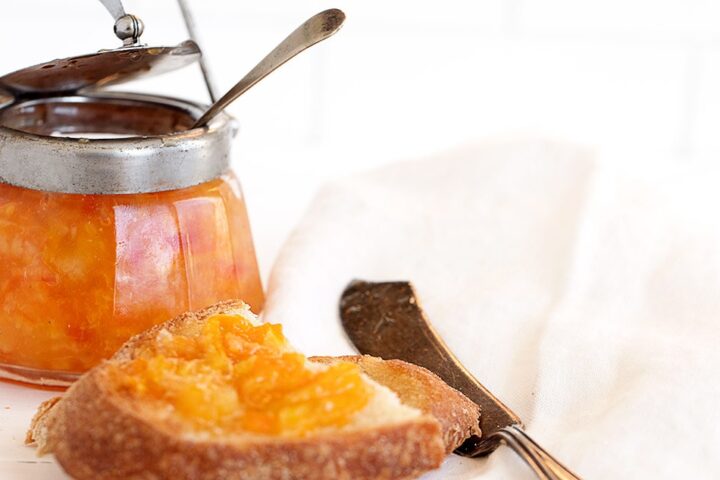
Get the Recipe: Quick and Easy Small-Batch Orange Marmalade
Ingredients
- 10 1/2 oz (300 g) mandarin oranges, such as Halo or Satsuma, about 2 large *see Notes
- 1 cup (240 ml) water
- 1/2 medium lemon, *see Notes
- 7 oz (200 g) white sugar, about 1 cup
- 1/4 cup chopped cherries or dried cranberries, optional
Instructions
- Before you start, take a small plate and pop it in your freezer. We will use it later to test our marmalade.
- Peel the orange and set the peel on a cutting board. Set the orange pieces aside for now. Get your sharpest knife and cut the peel into small slices. You can make them smaller, for a less chunky marmalade or larger for a chunky marmalade. Do try to make them all the same size, whichever way you go. I like a thin slice about 3/4-1-inch long.
- Using a sharp vegetable peeler, remove the peel from 1/2 a lemon, trying your best to get just the yellow and little of the white. Slice the lemon peel thinly and add to your orange slices. Cut the lemon in half and set the peeled half lemon aside with the peeled oranges for now.
- Add the sliced orange and lemon peel to a large saucepan (not aluminum or cast iron). Add the water and bring mixture to a boil over medium heat. Reduce heat to low, cover the pot with a lid and simmer for 20 minutes. **Check the pot after about 15 minutes to make sure there is still enough liquid in the pot. If not, add a bit more.
- Meanwhile, chop the orange by cutting across the equator of the oranges and breaking into smaller pieces, checking for and discarding any pits you might find. Place the orange pieces into a bowl (to keep the juices contained). Chop the half lemon, removing and discarding any pits. Add to the bowl with the orange pieces.
- Remove lid when peel has simmered. Add the white sugar and the chopped orange and lemon flesh to the pot. Increase heat to High and stir until mixture comes to a boil and sugar is dissolved. Allow mixture to boil, stirring only once or twice, for 8 minutes. At this point, use a few pulses with an immersion blender in the pot (or a potato masher), to break up the orange flesh a bit more, for a smoother marmalade. Just a couple of pulses are needed, as you don't want to break down the peel slices. Continue boiling for about 2-4 minutes more, then start testing the liquid on the cold plate from your freezer. *Total boiling time should be about 10-12 minutes in most cases.
- To test the marmalade: Drop a bit of the liquid from the marmalade on the cold plate and run your pinky finger through it. If the liquid runs back together and fills in the line you just made with your finger, you need to cook longer. If the line remains and the edges of the line look "set" or a bit wrinkled, your marmalade is ready!
- Remove pot from heat. Stir in any add-ins at this point. If you notice any chunks of the white pith from the lemon still visible, you can spoon out and discard. Let marmalade stand in the pot while you get your jar ready. Clean a 2-cup/16oz jar and dry. If you have a wide-mouth funnel, that would be handy here, too. Spoon marmalade into clean jar and let stand, uncovered, for 15 minutes, then place lid on jar (not too tight) and refrigerate.
- Marmalade will keep well refrigerated for up to 3 months or can also be frozen for up to one year.
Notes
Hi! I’m Jennifer, a home cook schooled by trial and error and almost 40 years of getting dinner on the table! I love to share my favourite recipes, both old and new, together with lots of tips and tricks to hopefully help make your home cooking enjoyable, stress free, rewarding and of course, delicious!


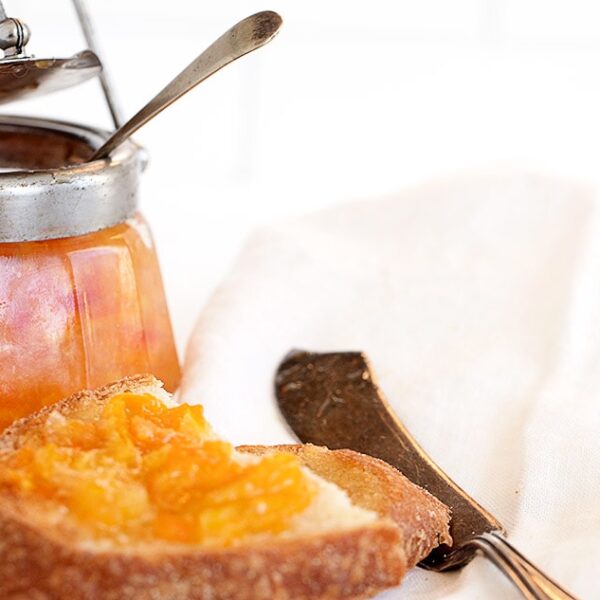
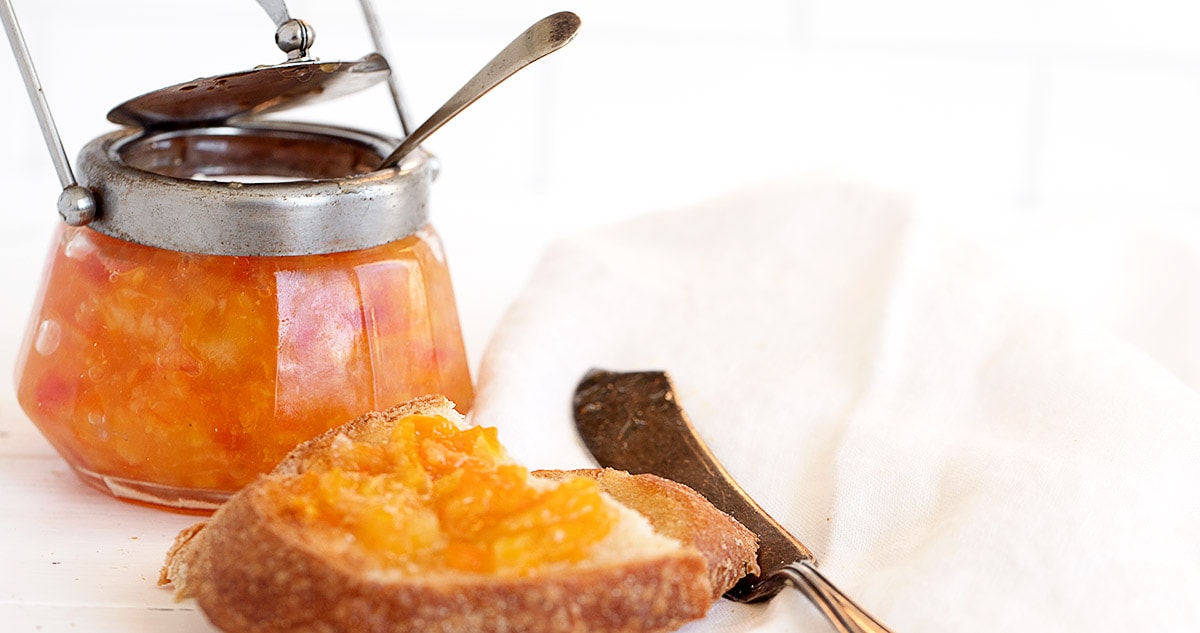
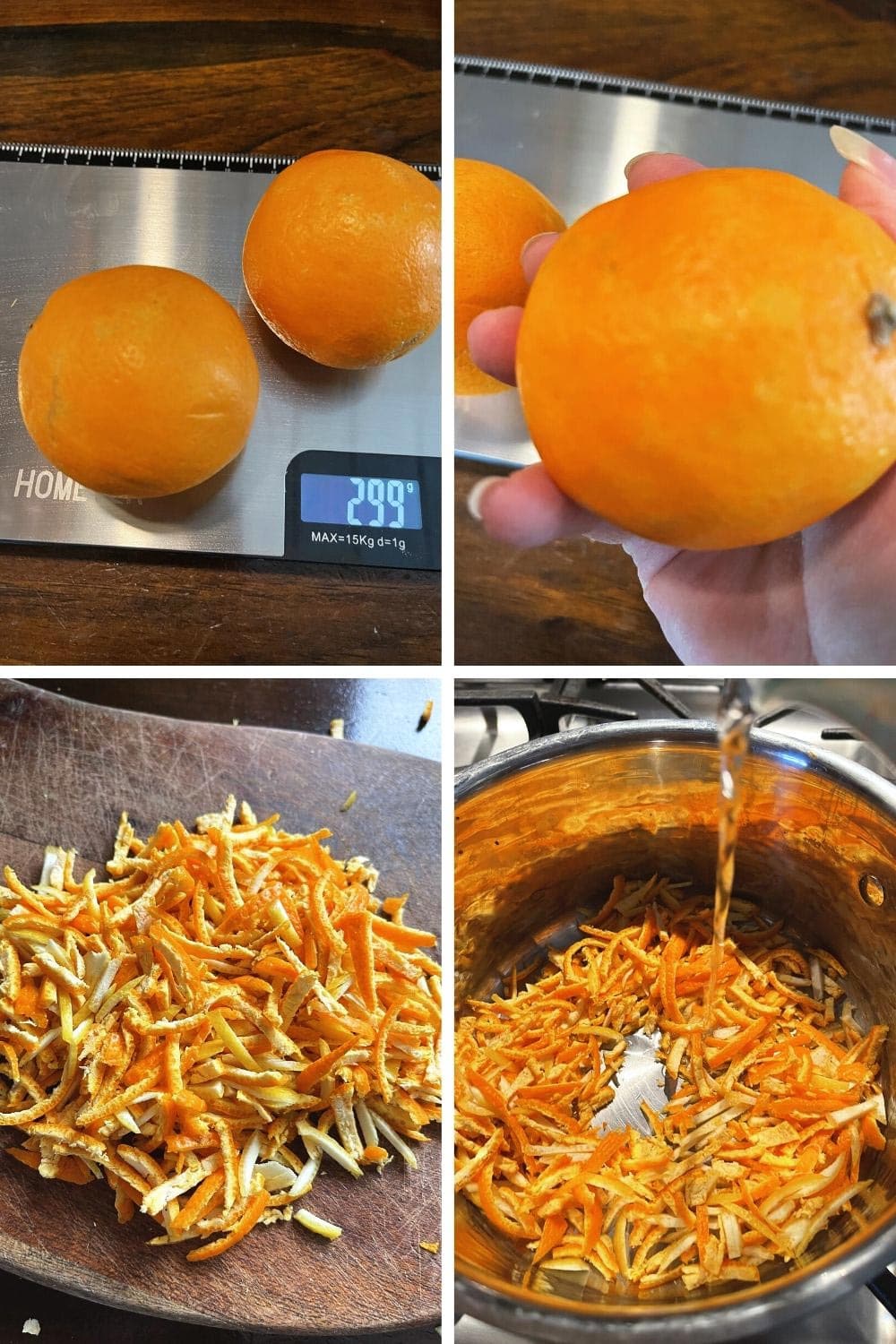
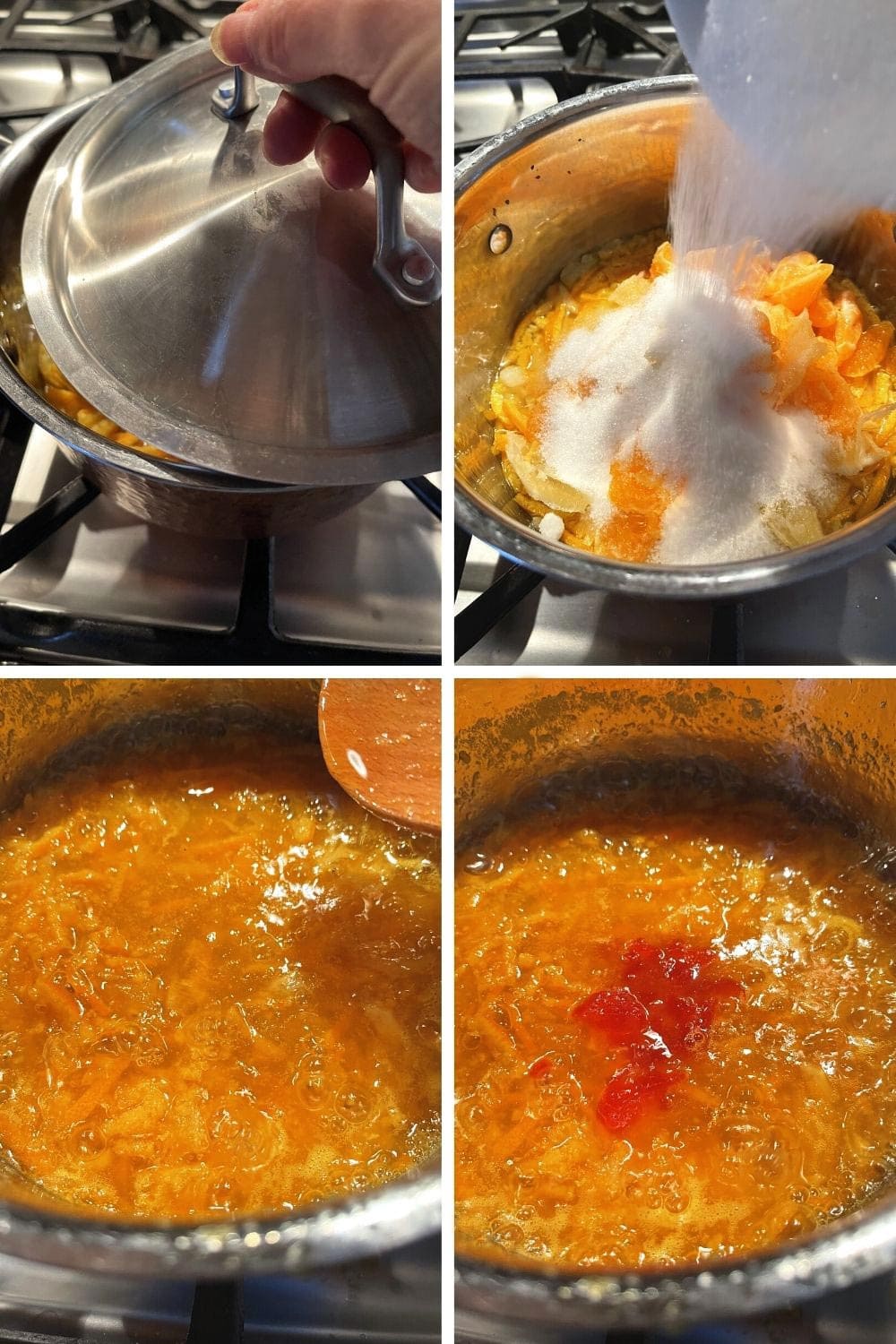
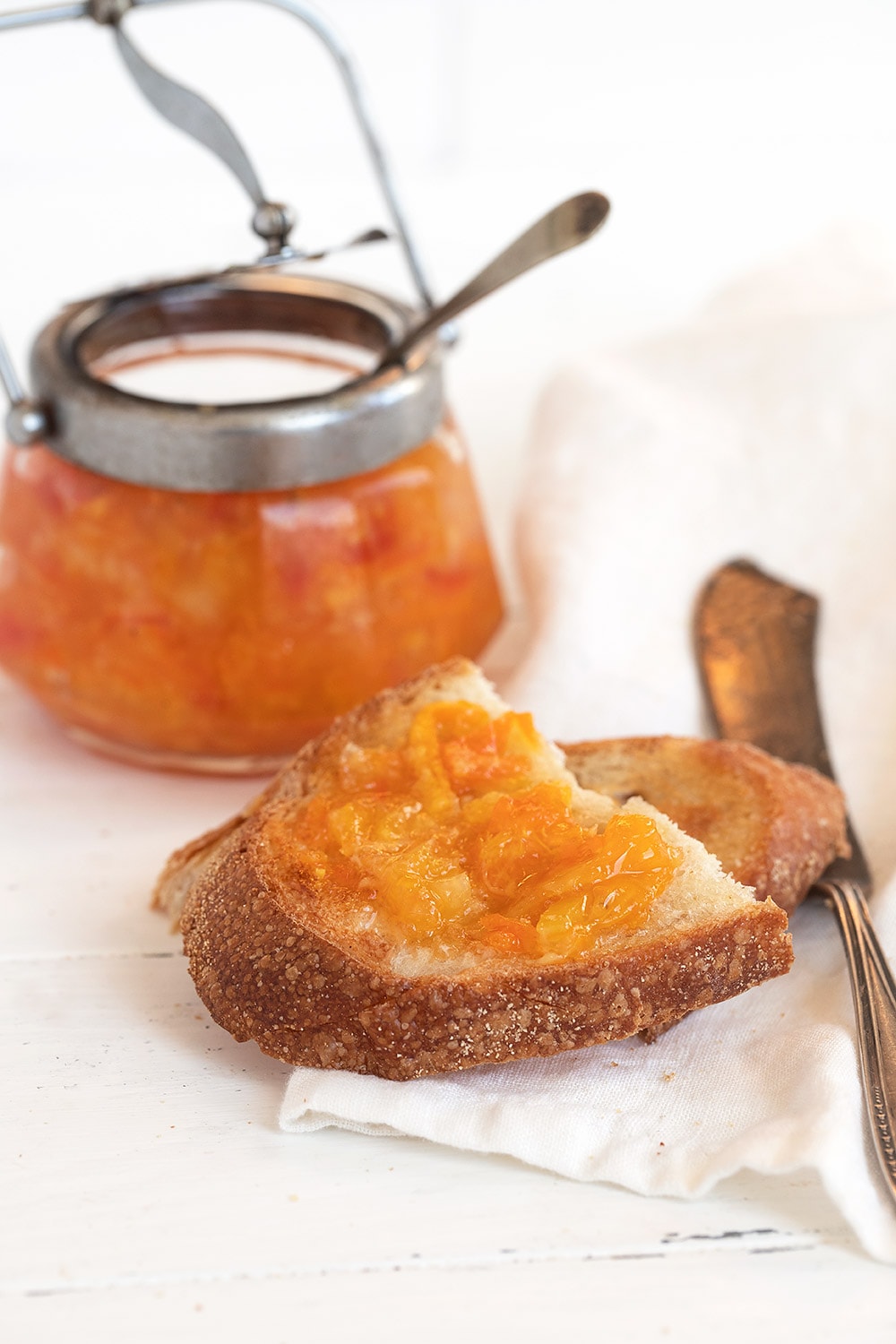

I LOVE this marmalade. I especially like the smaller amount of sugar than most recipes, which results in very intense flavor. I also like the small batch, since I’m the only one eating it. However, I may very well make a double batch next time, since it will make wonderful gifts.
Both times I have made it, it took longer than the 40 minutes total time listed. It’s possible that part of this discrepancy is that I used the really small mandarin “Cuties” which means more peeling and prepping (6-7 fruits). I will try with larger fruit next time.
I use thermometers for much of my cooking and baking: what would be the target temp for the finished product? (Is there a reason you use the “tried & true” cold plate method?)
Since I’m a fan of ginger, I added it to the marmalade, which adds a nice touch.
Thanks for this great recipe!
So glad you are enjoying it! The ginger addition sounds lovely. I used the cold plate method for testing as I have found that very few people seem to have thermometers. Since you do, you should aim for 221F (assuming you are at or near sea level). If you are at elevation, it would be lower I believe.
I want to try your recipe, I’m just not clear on how much water to add. Thank you kindly in advance.
It looks like a great small batch recipe.
Hi Karen, you start with just the 1 cup of water as listed in the ingredients.
Hi! Just found this recipe because I was searching for one that didn’t require pounds of oranges. Wondering about reducing the sugar a bit. Would that still work? Thanks!
Hi Yasmine, I don’t recommend reducing the sugar. It is needed to set the marmalade and ensure good shelf-life.
A falling branch from a nearby tree fell on our orange tree, leaving me to find a way to use lots of fallen oranges quickly, this was the perfect solution, the oranges are navels, very sweet, however, the amount of sugar was perfect.
My husband says he will never eat commercial orange marmalade again, and I’m going to have to agree with him, this is now part of my cooking arsenal.
I doubled it fine, and substituted some of the sugar with home made vanilla sugar.
Thank you, Jennifer!
Sorry to hear about your orange tree, but I’m glad you found your way to this marmalade and are enjoying it. Thanks!
This is a wonderful recipe! The marmalade tastes citrus-y and bright. I will definitely make it again. (And again.)
I have a question – mine didn’t turn out “clear”. I did not section the mandarines from their membranes and so all of that is in the mix. Should I have?
Thank you, Jennifer, for a great recipe. I appreciated all the tips.
So glad you enjoyed it, Violet :) And no, there is no need to section out the mandarins at all. Marmalade isn’t typically clear, but it will look more clear if you use a larger cut of the peel. Finely chopped peel can make it appear cloudier.
Got it. Thanks for your response, Jennifer. That is helpful. It is such a good recipe.
Made this for my family and everyone said they can’t go back to store bought again! What a great recipe. Thank you for the clear instructions! I did add a bit of grapefruit but that is because it had been sitting on the counter and needed to be used up!
So glad you enjoyed it Jesslyn. Thanks!
When freezing marmalade it’s not solid is that safe ?
Hi Regina, the mixture won’t freeze solid due to the high sugar content. The cold of the freezer is still doing its job in extending the life of the marmalade. It should be fine for up to 1 year in the freezer.
I have a mandarin lemon lime tree with a lot of small ripe fruit. The fruit is very sour. Could you please give me a recipe for marmalade, if you have one. Thanks for your help.
Hi Theresa, for very tart fruit, you can follow the basic ratio of 1 1/2 to 2 to 1, sugar to fruit. So use one and a half or twice as much sugar to fruit, by weight. To plug that in to this small-batch recipe, simply use 300-400 grams of sugar instead of the 200g listed.
I used cara cara oranges and otherwise followed the recipe and instructions exactly. I did need to simmer it much longer than indicated, I may not have boiled out any water when the peels went in or it could be that I live at altitude. Either way, it turned out amazing, so glad to not have to deal with canning. Thank you!
So glad you enjoyed it and yes, I love small batch preserves to be able to skip the canning :) Thanks!
My first small batch worked perfect. My second batch didn’t set. I don’t think I simmered the peels down enough. I used the 2x batch. Do you think I could simmer it down again ?
Hi Teleca and yes, you could give it a try simmering again. I find that it tends to caramelize a bit with subsequent boilings, but it’s still tasty.
Fantastic recipe! It works even with my changes. Thank you for the gram measurements, it does make a difference. I used a timer as well as a thermometer to 220°. My changes: no lemon, no rind, used orange juice instead of water. I guess that would make it Orange jam instead of marmalade. It’s still good, IMO.
All’s well that ends well! So glad it worked out well for you. And nothing wrong with orange jam. Sounds refreshing!
Lovely recipe ..have just made a batch ….did a rolling boil for 25 mins just to reduce down the liquid…added some chopped chillies as want to have it with cheeses ….deeelish
Sounds lovely, Gail :) Glad you enjoyed it!
i assume you can waterbath can this? I was also wondering if it’s a little bit on the tangy side? I like my marmalade not too sweet.
Hi Laura, I can’t advise on canning it, as I’m not an expert in that area. You need enough sugar for it to set and preserve, so you can’t really reduce that, but you can use a less sweet orange to get what you’re looking for.
Hi Jennifer thank you for this recipe you posted, your recipe seems simple and easy to follow…but I was wondering what happened to the seeds of your oranges? Did you slice the oranges with the seeds in it? Or did you take it all out before slicing it? I am just wondering how did you do that part? As I am about to do this recipe but I feel like I don’t want to include the seeds in it.
Hi Kems and no, you definitely don’t want any seeds in it. The oranges I used were seedless. If yours have seeds, pick them out and discard when you chop the pulp.
Thanks for the delicious recipe!! I am loving this marmalade on toast with a spread of fromage Blanc 😋 I like the method of removing peels first, it’s easier to get really thin peel slices in contrast to slicing the whole fruit as I see on other recipes. I made a double batch, one for now and one for the freezer, and boiled for about 25-30 minutes – could have gone longer but I’m happy with the slightly looser consistency than what I would buy at the store. I just gave the pulp a few pulses before adding to the peels which worked great.
So glad you are enjoying it, Melissa :) Thanks so much!